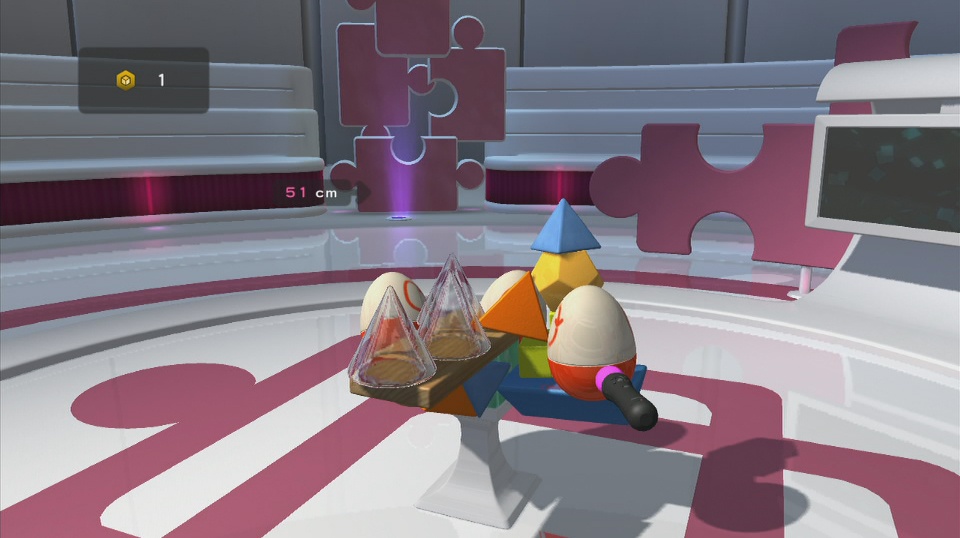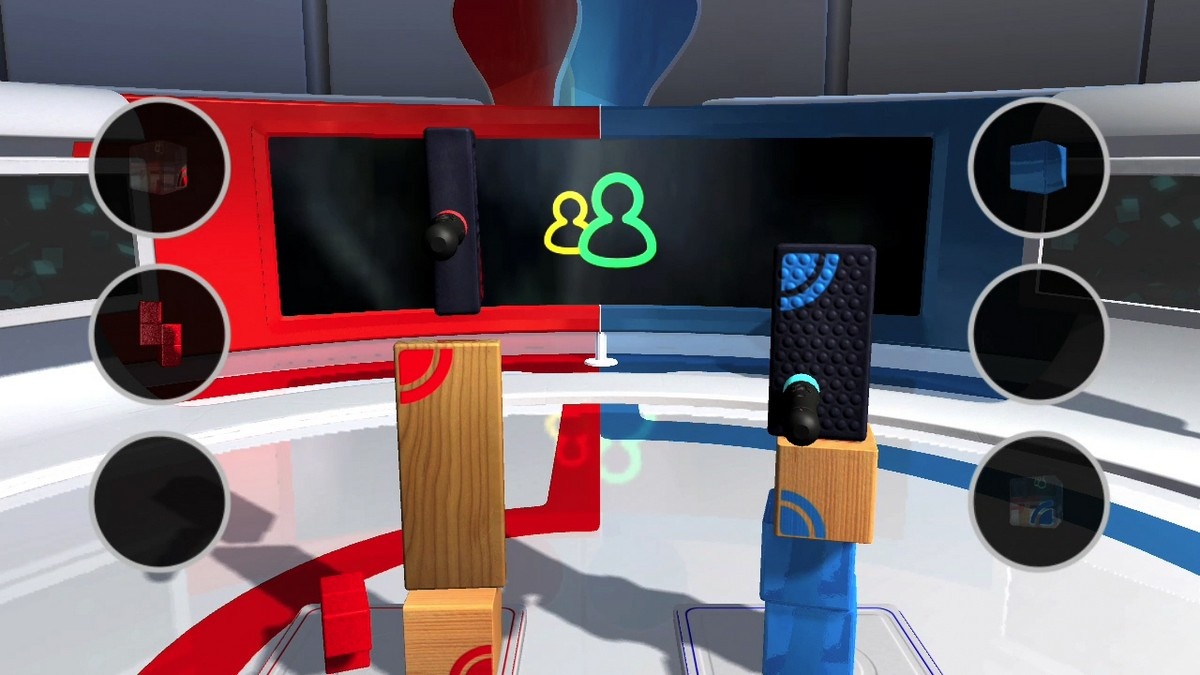It's probably been quite a while since you played with building blocks; perhaps erecting towers just so that you could knock them down again or--if it was even longer ago--smashing one against the floor while gnawing and drooling on another. Saliva isn't simulated in Tumble, but if your building block ambitions aren't motivated by teething, then this PlayStation Move puzzle game almost certainly has you covered. Varied and imaginative puzzles challenge you to both build and destroy unlikely-looking towers in the lengthy single-player mode while enjoyable local multiplayer options afford you an opportunity to pit your stacking skills against a friend. Tumble isn't reason enough to invest in any Move hardware, but if you already own a Move motion controller, then that's reason enough to drop $10 on this clever and well-presented downloadable offering.

Tumble is a game that uses the Move motion controller to great effect, and the controls could hardly be simpler. You point at the block you want to pick up, use the trigger to grab and release it, and hold down the Move button when you want to reposition the camera. And that's it. The camera isn't quite as versatile as it could be and refuses to go low enough to be useful during tricky limbo-themed levels, but outside of this minor irritation, the controls are difficult to fault. Tumble even makes it incredibly easy to recalibrate your controller on the fly because you can hit the O button to center your position on the screen at anytime--very useful if you want to sit down and play after standing for a while, for example.
The puzzles in Tumble start out simply enough. Early levels do nothing to mess with the gravity that serves as your enemy and challenge you either to build as high as possible or to use as many blocks as possible. As you progress, puzzles introduce seemingly minor new challenges that end up changing the game completely. Blocks made of different materials, for example, force you to concern yourself with qualities like weight and grip, while oddly shaped blocks (does an egg even qualify as a block?) are clearly more difficult to work with than cubes. The platform that you build on gets smaller, sloped, shaky, and even swapped out for a seesaw on occasion, ensuring that Tumble's puzzles never feel overly repetitive. Other hazards you have to contend with en route to the last level include fans powerful enough to blow light blocks away, moving obstacles that will push your blocks out of the way unless you build around them, and antigravity rooms in which different-colored blocks are pulled in different directions. There are also some really satisfying puzzles that involve using mirrored blocks to manipulate beams of light. Inevitably, there will be one or two puzzles that frustrate you, but attaining bronze medals for level completion is rarely difficult--it's only when you push for silver or gold medals (which you need a number of to unlock subsequent challenges) that things get tough.
When Tumble isn't keeping you busy building, it's testing your demolition skills with score-based challenges that see you trying to take down towers using only a few limpet mines. You score points not for simply bringing the tower down, but for sending the blocks as far away from the tower's original location as possible. It doesn't sound difficult or even particularly interesting, but when you factor in blocks of different weights, blocks that offer score multipliers, and a baseball block that awards you a home run medal if your explosions send it all the way to edge of the level, these challenges become surprisingly compelling. Later demolition levels are among the most fiendish that Tumble has to offer because towers are assembled of mostly heavy blocks and have almost no obvious weaknesses.

If you were the kind of child who never minded sharing your building blocks with a friend, you might be pleased to learn that Tumble gives you the option to play through all of its puzzle levels cooperatively by plugging in a second motion controller. A much better use for that second controller, though, is to use it in any of 15 different competitive scenarios. With that said, you don't actually need a second controller for most of the competitive levels because they're turn-based affairs in which you and a friend both work on the same construction. There are a few levels that require two controllers, though, because they challenge you to build a tower more quickly than your opponent so that the camera--which always focuses on the taller of the two--loses sight of them completely. Sadly, these levels aren't always much fun because you're not given the same blocks to work with, so one player almost always ends up having an advantage from the get-go. The turn-based levels are much better, and although they're clearly based on the single-player puzzles, they play quite differently because as you position the three blocks you're randomly presented with each turn, you're trying to make life difficult for your opponent.
Tumble's presentation is every bit as good as its gameplay. A well-spoken narrator accompanies you everywhere, all of the blocks look and behave as you'd expect them to, and because your in-game presence is an accurately modeled motion controller, there's never any confusion about how your movements translate to the screen. There's also a targeting reticle of sorts that appears beneath blocks you're holding, which--when it's not being obscured by the camera or superimposed onto a block of the same color that makes it difficult to see--is very useful. Minor camera issues aside, Tumble is a game that impresses at almost every opportunity. The single-player levels alone do enough to justify the asking price, and there's a good chance that you'll come back to the multiplayer time and time again. Better still, there's no danger of losing any of these blocks under the couch or being told that you can't watch TV until you've put them all away.